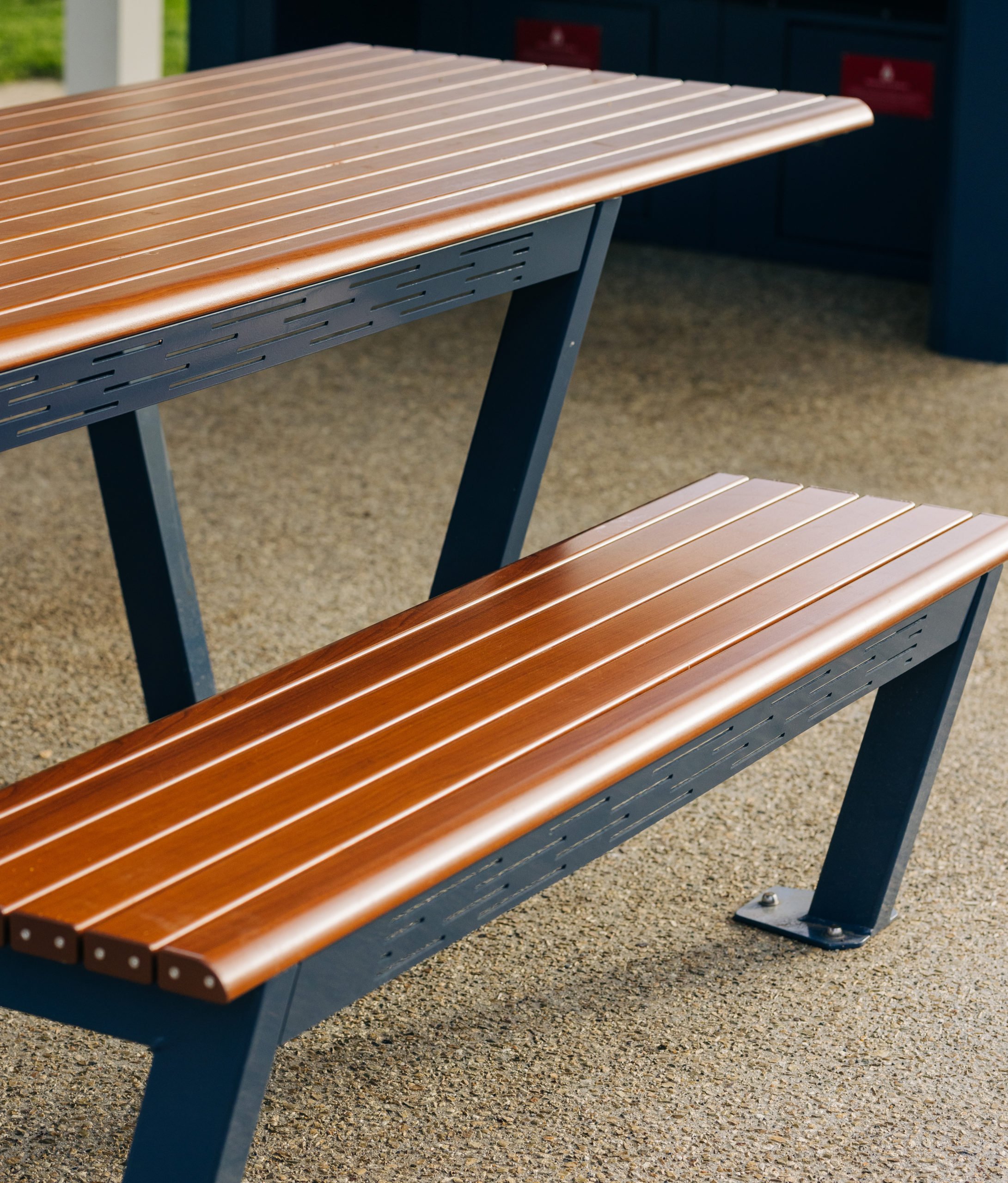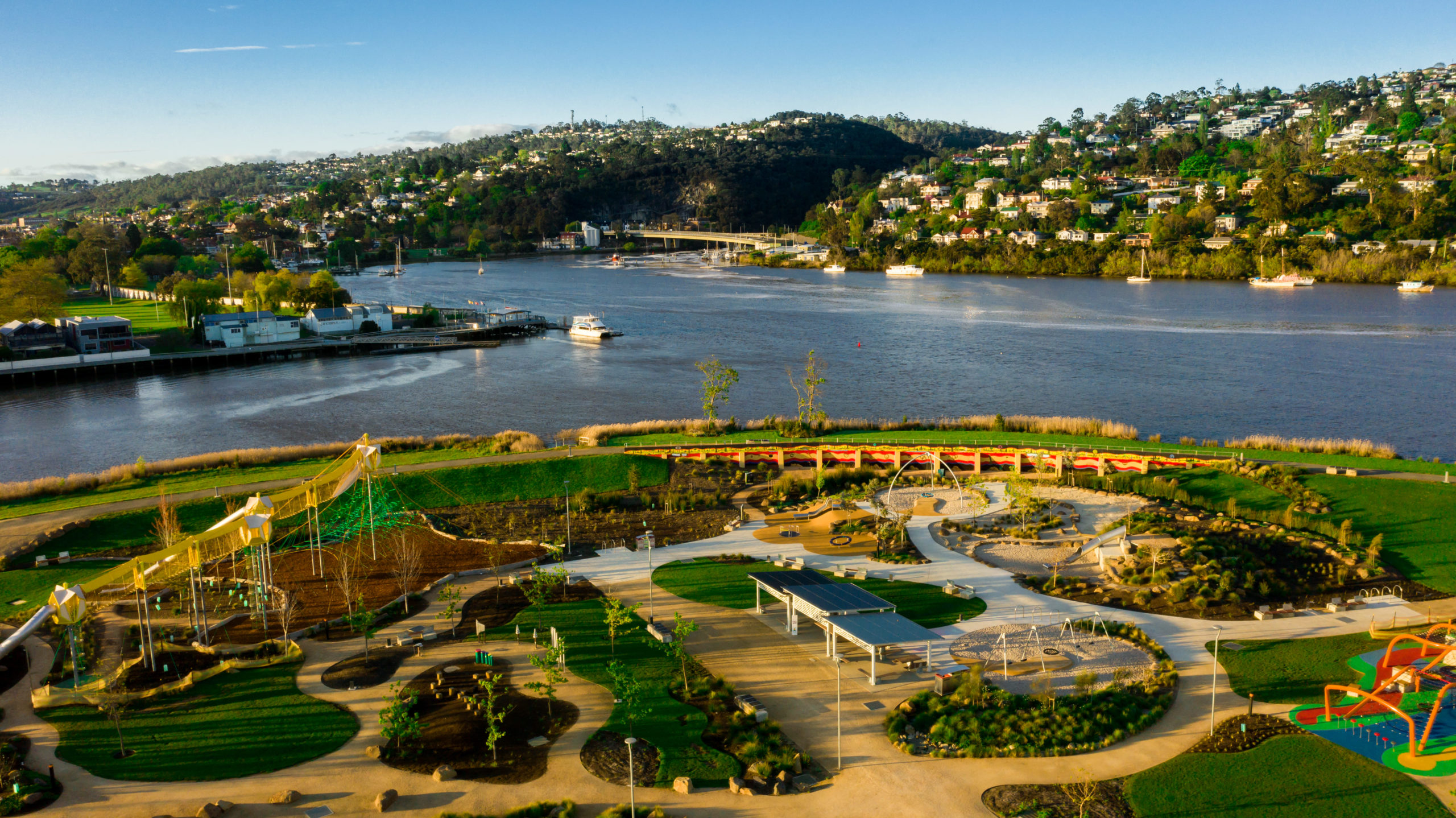October 14, 2025
As the demand for healthier, more sustainable urban environments grows, parks and public spaces are increasingly being designed with wellness at the forefront. Landscape architects, councils, and contractors are rethinking how parks can support the physical, mental, and emotional well-being of communities. From integrating biofeedback technology to designing spaces for mindful movement, the future of park design is centered around urban sustainability, wellness, and functional street furniture.
Here are four innovative park design trends and examples that are setting the stage for the next generation of street and park furniture in Australia and globally. These trends not only highlight how street furniture suppliers and landscape architecture are evolving but also offer inspiration for those tasked with designing the next generation of outdoor spaces.
1. Street Revitalisation: Transforming Parking Spots into Social Hubs
Example: Parklets in San Francisco (USA)
Parklets originated in 2005 when the activist group Rebar transformed a San Francisco parking spot into a temporary park with a bench, tree, and grass. This sparked the creation of the annual global Park(ing) Day event, held every September, and became part of the Pavements to Parks program in San Francisco. Parklets are small, people-focused spaces that convert underutilised urban areas, like parking spots, into vibrant zones with seating, greenery, and art. These parklets provide valuable public spaces for relaxation, social interaction, and community engagement, while enhancing urban aesthetics and encouraging walking. They also offer mental health benefits and support local economies by increasing foot traffic and benefiting nearby businesses.

St. James's Park, one of eight Royal Garden Parks in London, United Kingdom.
2. Thermal Healing: Urban Heat Island Mitigation
Example: Green Heart Parks in London (UK)
Royal Gardens in London dubbed 'Green Heart Parks' offer more than just a peaceful escape from the hustle and bustle - they're a natural cooler that plays a vital role in fighting the Urban Heat Island (UHI) effect. Research has shown that large greenspaces like Green Heart Parks can drop nighttime temperatures by as much as 4°C, with this refreshing coolness extending as far as 440 meters from the parks during warmer evenings. This cooling effect is especially crucial on still, hot nights when the city’s heat can be unbearable. By weaving in trees, lawns, and other greenery, Green Heart Parks aren't just enhancing the beauty of London - they're actively reducing the urban heat, making the city a more comfortable place to live. This shows how well-planned green spaces can be a game-changer for combating rising temperatures in cities and improving our overall well-being.

Shinjuku Gyoen National Garden, Tokyo, Japan.
3. Forest Bathing Furniture: Nature Immersion Programs
Example: Shinrin-yoku Forest Therapy in Japan
In Japan, Shinrin-yoku, or forest bathing, is a scientifically backed practice with proven health benefits. Research shows that spending time in forest environments increases natural killer (NK) cell activity, boosts immune function, and reduces stress hormones, leading to better sleep quality. It also helps lower blood pressure and heart rate, aiding in the prevention of hypertension and heart disease. Forests, rich in phytoncides (plant-derived essential oils), provide a calming atmosphere that enhances mental well-being. Parks in Japan have embraced Shinrin-yoku by offering dedicated spaces for relaxation and mindfulness. These natural retreats allow visitors to immerse themselves in the peaceful environment, promoting stress relief, improving mood, and encouraging overall mental and physical health.

High Line greenway, New York City, United States.
4. Urban Greenways: Empowering Wellness in the Urban Landscape
Example: The High Line in New York City
The High Line, once an abandoned freight rail line, is now a 2.33-kilometer greenway on Manhattan's West Side that showcases the transformative power of urban green spaces for public health. Saved from demolition by the community's deep attachment to the site, it highlights the strong connection people have to their outdoor spaces. Today, it boasts over 500 plant species and serves as a wellness hub, offering Tai Chi classes and other free programs that promote movement, social interaction, and relaxation. Research on NYC parks shows that improved access to green spaces is linked to lower BMI and better overall health outcomes. The High Line exemplifies how greenways, through wellness programs and community engagement, can significantly enhance both individual well-being and connections to urban environments.
The Future of Urban Parks: Designing for Wellness
As cities grow, the role of parks is evolving beyond recreation to become essential for well-being. From San Francisco’s parklets turning parking spaces into vibrant community hubs, to the cooling effects of London’s Green Park, to the transformative Shinrin-yoku forest therapy in Japan, and New York’s High Line offering space for movement and connection, these examples show how green spaces directly impact health. Backed by research, we know that access to parks reduces stress, improves physical health, and strengthens community bonds. The lesson is clear: urban parks are more than just green spaces - they are critical to the vitality of our cities and the health and wellbeing of those who reside within them.



 Back to News
Back to News 


